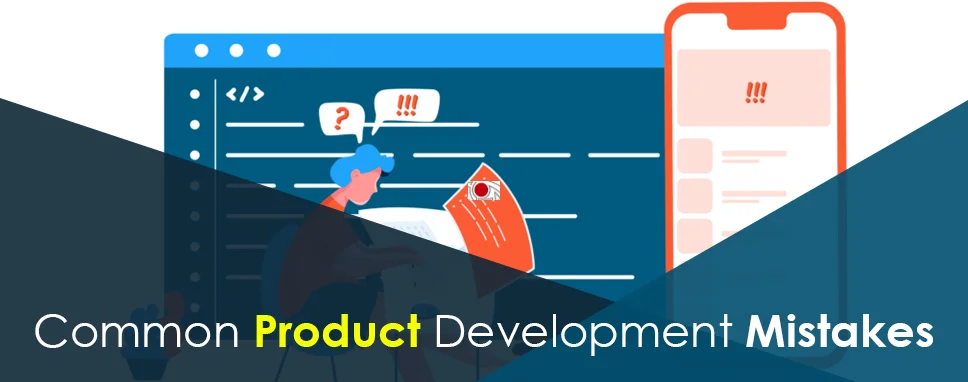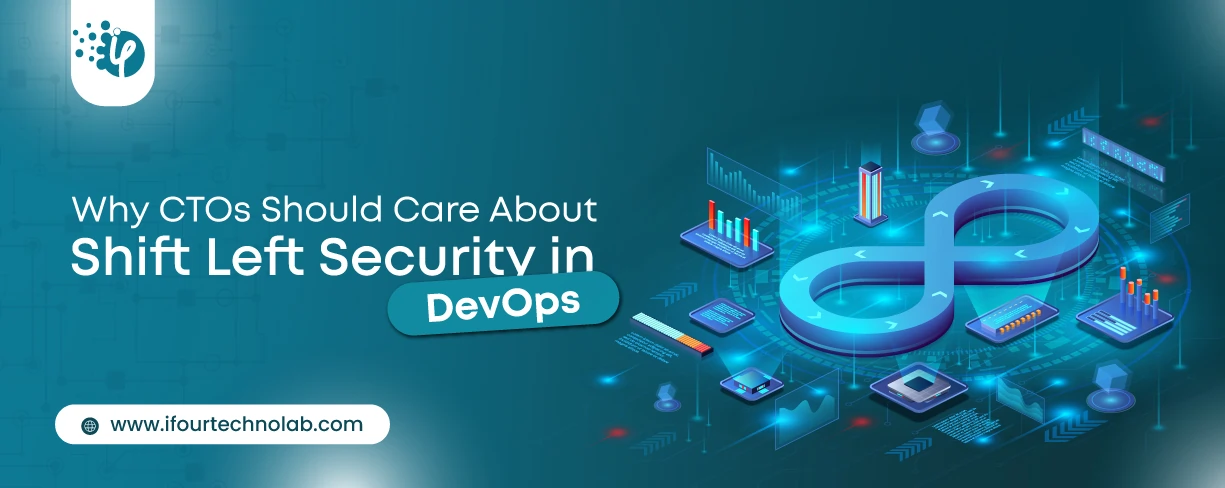How to Do Forecasting in Power BI (Steps & Accuracy Metrics)
Remember our last guide - Power BI forecasting? It revealed things that truly blocks accuracy, both structural and situational. Now it's time to take the next step. Knowing Power...
Listening is fun too.
Straighten your back and cherish with coffee - PLAY !

Many times it happens that the products released in the market, end up with failures even after giving our best to it. There could be several reasons for it, like the commercialization of products without making any serious efforts about its demand in the market, introducing the product in the market before it is completely ready, unsatisfactory performance, lack of product idea, costly product, etc.It ultimately makes no sense if you fail to follow proper product development strategies and certainly, your end product would lead toan abysmally low level of success. Customer feedback, rational decisions are some of the positive ways of keeping your product development on the right track.
““One common mistake in product development is to not clearly define what problem to solve and how you should measure whether you are successful or not. The product development team should own the problem to maximize both autonomy and outcome. Then it's up to the product development team to come up with the most innovative solution to solve said problem, while achieving the expected (ideally measurable) outcome.”
- Andreas Johansson, UX Specialist at Andreas Johansson UX
“One of the biggest and most common mistakes is to be a solution looking for a problem. Too often, companies start out with an idea and then look for product/market fit. This is backwards. Seek out the problems first. Ideally, you know what general market you want to serve (perhaps because the founding team has some expertise in that area). You then go spend time in the field talking to people in the industry – influencers, powerbrokers and innovative customers. Find out what the unmet needs are. Decide which one you’ll focus on, develop a point of view about the problem and identify what companies or consumers should be doing to solve the problem. Then, and only then, do you define what your unique approach/solution will be. This helps to set you up for clear differentiation from the get-go, so that you don’t wind up in a functions-and-features arms race like we see today with almost any SaaS provider you can name. You want to be way out ahead of any competition – not in with the pack.”
- Theresa M. Lina, the CEO of Lina Group, Inc
"One common mistake that every startup should avoid is not investing enough in market and user research.
It can be very tempting to overlook the importance of market research. Without having enough resources to determine how your new product fits in the current market based on users' experience, buying habits, and levels of satisfaction with already existing products, it will be hard to determine opportunities for your new development.”
- Alex Perkins, Co-founder of All the Stuff
“From the technical side of things, a common product development mistake is not dedicating enough time to have an automated build and release pipeline that allows shipping changes to your product's live version in a short and non-disruptive manner. The longer and harder that shipping or fixing a feature takes/is, then the more your customers suffer and your developers grow frustrated.
A typical mistake when developing a product is focusing on state-of-the-art technologies which could speed up development during the first weeks, but starting to grow as a concern due to reliability issues, missing or wrong features, and lack of experienced people to work with it. It is better to choose battle-tested and boring technology, allowing your developers to focus on delivering things instead of having to learn new tools.”
- Leandro Lopez, Product Experts at Theorem
“A common product development mistake that all companies should avoid is building products without customer feedback. It's critical that customer input is a part of product development from beginning to end. Initial interviews with customers will help product leaders understand how they think, what matters most, and their biggest pain points. Then, once designers have created a mockup of the product, this should be shown to customers for feedback. The product MVP, and each version thereafter, should be tested by users. This is the best way to ensure that the product that's built effectively solves a real customer need.”
- Bruce Hogan, CEO of Software Pundit
“Assuming that developing ideas is the most pivotal process in a Product Development. **What people and companies need to understand and grasp is that ideas are endless and there will always come a time when an idea laid out today can be improved the next day, so on and so forth. *
The point is, there will always be ideas, but this should not be the main focus of Product development. It's the execution and properness of it that will exemplify the product or service model. Businesses tend to invest more time in conceiving an idea and less in executing it. *But an idea without execution is like a lump of uncooked meat. It may the best and finest meat in town, but if not cooked, it will remain as it is and still get spoiled.
You have to be more focused on what resources and ways you can implement to execute the idea as smoothly as planned. After all, it's during execution that you will come to assess whether the idea is a good one or just seemed nice when presented and not when done in actual. A great idea has to be fueled with execution or else it will never be comparable to good, neither the best.”
- Sandra Matthews, Marketing Specialist at The Product Analyst
“Development teams often fall into the trap of building a product based on an exciting idea without fully understanding the problem that needs to be solved. Doing thorough market research, identifying a target market, and then communicating with potential customers in that market are the first steps toward gaining that insight.
It’s essential that this research takes place before development begins to avoid expensive code changes later in the product life cycle. Once development starts, a successful product team is constantly iterating based on user feedback throughout the life of the product to ensure continued product market fit.”
- Sarah McNulty, Director of Product Design at IntelAgree
“More often than not, too much importance is placed on an idea and too little on the execution. No matter how great your idea is, there are probably at least 10 versions of it already out in the world. The way to succeed is to execute it better than the rest. As obvious as it seems, this misconception is pretty common and persists. You probably won’t build the first mouse trap but you can certainly build a better one. Share your idea, validate it with people who’s opinions you value, get feedback, and build it.”
- Todd Ramlin, Manager of Cable Compare
“One of the biggest mistakes that you can make is following your gut feeling when developing new features. Just like the idea for your product, new features have to be validated and based on the actual demand from your users. If you build features just because you think “they will be nice to have”, you’ll end up with a lot of unhappy customers who have more urgent needs than what you imagined would be nice to develop.”
- DmytroOkunyev, Founder of Chanty
“One of the most dangerous mistakes a startup can make is feature creep. In most cases, you don't have an endless financial runway or resources of bigger organizations to fall back on, so brutal prioritization of what makes it into your product is absolutely essential. That's where the concept of Minimum Viable Product (MVP) helps a lot. Ask yourself - what is the core nugget of value my product provides to my customers? Will the feature I am planning on adding support that case or be an optional nice-to-have that will waste precious development time? Have I talked with my customers and validated that assumption? These questions help a lot keeping you focused on things that matter instead of spending precious time building expensive distractions.”
- Lazar Stojkovic, Founder & CEO of Dev Shopper
“The biggest product development mistake in the software industry, hands-down, is rigidity. All too often, companies build software perfectly suited for a specific purpose, but the software isn’t all that useful for anything else. This happens when the software solution is too opinionated; it works great for a single case, but it’s too rigid for any other use..
You may be wondering how this is the biggest problem in software development - shouldn’t software companies have “figured it out” by now? Unfortunately, it’s not that simple. People will try to use the software in absolutely ridiculous ways, and you have to give them some flexibility to do so.”
- Holly Winters from BrandCave
“The one mistake every startup should avoid is spending too much time perfecting the 0.1 version. Engineering the perfect solution instead of making a quick proof-of-concept, you can iterate as feedback flows in from users. Make it work and make it pretty later. Make it work now, then make it pretty later. The priority is to generate momentum (e.g., adoption, sales) through a demonstrable prototype first! That said, releasing an app (prototype or otherwise) with known vulnerabilities is wreckless. Nearly 70% of data breaches occur at the web application layer due to hackers simply scanning web apps for known vulnerabilities.”
- StanleySt-Fleur, Founder of NO STATUS QUO, INC.
“One of the most common mistakes in software development is insufficient testing in the early stages of development. Testing allows identifying all the flaws at every stage of a software development, which will avoid problems when users use the software in the future, so users will have only a positive experience.
Otherwise, if the user comes across an error, will most likely get a negative impression and will no longer have the desire to use software that has obvious flaws. Thus, developers are losing their users.”
- Nadine Grant, Marketing Manager at Comparium
“In the pursuit of faster results, entrepreneurs are often willing to skip certain steps in the project development process. This is becoming a common mistake, as a software product's successful creation requires strict adherence to the plan. Typically, entrepreneurs can skip research, concept, and strategy steps that belong to the discovery phase. Skipping at least one of these steps for the sake of a quick development start means that you will act without proper preparation. These actions can result in reworks, schedule delays, and financial risks.”
- Maxim Ivanov, CEO & Co-Founder at Aimprosoft
“Scaling up too fast is something plenty of companies do when it comes to software product development. Unless your application became hugely sought-after shortly after the release, an MVP is enough. Even if your budget allows you to build something more complex, start with a minimum viable product.
It's reasonable to scale up only when you've tested out the initial version of your product, collected enough customer feedback, and have seen the demand for it. This way, you won't waste your time and money on something that doesn't turn out how you expected it to.”
- VladlenShulepov, CEO at Riseapps
“One common product development mistake is for those with a low budget to hire the cheapest person possible, a mistake I have made when developing a product before. I ended up being scammed and then getting low quality work. When I started to hire more expensive developers who were better at what they do, it ended up being better quality and costed a lot less.”
- Stacy Caprio, Founder of Her.CEO
“There are lots of common mistakes that people make with product development - a lot of which are based on a lack of experience. I’ve seen a fair few of these when working with software developers and, the one that stands out for me is bias. Let me explain: Product development relies a lot on human stuff and humans have opinions and beliefs. Product development can fail due to two different kinds of bias:
Innovator - The product owner is so enamoured with his or her brilliant idea that they don’t really want to be bothered with pesky things like risk assessments - or working out the problems with their idea. In order for an idea to work, it needs to solve several different interconnected variables through a successful business model and a unique USP - otherwise, it will fail.
Confirmation - This kind of bias occurs when the product owner insists on only looking for results and evidence which confirm their idea or opinion and ignore the more compelling evidence which shows that an idea may not be all that great.
In my experience, bias is the biggest enemy of a product development project - which is why a brand should always hire a super experienced project manager.”
- Jack Zmudzinski, Senior Associate at Future-processing.com
Identifying the right techniques for product development and working on the feedback given by the customer would help you greatly to overcome the general mistakes. Proper market research about the demanding product should be done well in advance and learn the requirements of the customer. This would create the broadest impact on your product development strategy. Different people have different needs. Therefore, don’t try to rush in with the development strategy. Try to understand the difference between a user and a customer.

Remember our last guide - Power BI forecasting? It revealed things that truly blocks accuracy, both structural and situational. Now it's time to take the next step. Knowing Power...

Security has always been a major concern. Your company spends millions on cybersecurity tools, and guess what? You’re still vulnerable. When you're working in the cloud, especially...

Automation isn’t just a trend anymore. It’s a must-have for any business relying on the Cloud. As the firm grows, cloud infrastructure gets more complex. So, choosing the right Infrastructure...